Corpora Aliena at IKLECTIK : ‘Dreams and Shadows’
Saturday 30th March, 2019 – doors 7pm – music 7.30pm – £8 adv / £10 otd BUY TICKETS (fees apply)
Corpora Aliena is pleased to present a concert of diverse experimental music performances: Dreams and Shadows – an evening of thoughtful meditations featuring; the composer Bernhard Living, who will perform a live version of his digitally-based ‘Composition 2017/06 (A Coincidence of Light)’ – a work made up of repeating and evolving layers of sound with noise and fragmented harmonies;
Pascal Savy will present a new electronic piece inspired by the strange ontological realm of dreams. His live composition will explore the space that lies between existence and non-existence in which oneiric memories cast a haunting shadow onto reality itself; and under her new alias of Avsluta, Lucie Štěpánková will be performing a minimalist/progressive set – combining synthesized compositions, abstracted field recordings and live improvised interaction with materials and objects.
In addition to the music performances, there will be a screening of videos produced by the Portuguese artists Pedro Barateiro, Rui Calçada Bastos, João Pedro Fonseca, Luisa Jacinto and Nikolai Nekh – whose works are filled with contemplative observations of time, space, feelings, lives, lost expectations or phantasmagoric dreams. Scroll down for more information.
The Dreams and Shadows concert is an exciting opportunity to see and hear some of the leading international musicians and artists who are a part of the contemporary experimental music scene.
Corpora Aliena is curated by Dasha Birukova and Bernhard Living
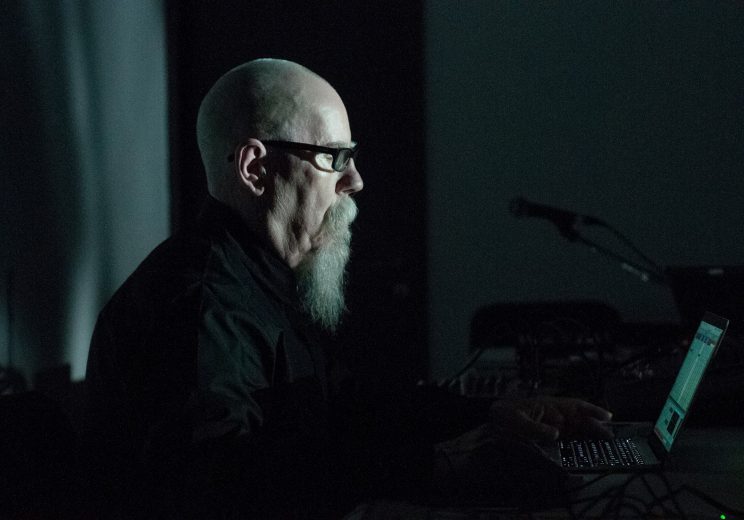
Bernhard Living
Bernhard Living (B. 1948 UK) is an experimental music composer, curator, poet and former multi-instrumentalist (playing alto saxophone and flute). He studied composition under the South African-born composer professor Stanley Glasser at Goldsmiths College, University of London, and philosophy under professors Jonathan Reé and Peter Dews at Middlesex University, London.
Musician
As a musician Living performed with a number of leading composers and musical innovators, including; Karlheinz Stockhausen, Cornelius Cardew, Hugh Davies, Barry Guy and Mike Westbrook. He is a featured soloist on a number of classic jazz, punk and rock albums, including; Mike Westbrook’s Celebration (1967), Release (1968), and Marching Song (1969); Manfred Mann’s Chapter Three (1969) and Chapter Three Volume Two (1970); Barry Guy’s Ode (1972); and Linder Stirling’s Ludus project (1982). The Sunday Times music critic Derek Jewell described Living’s performance style and technique as ‘revolutionary’.
Composer
Bernhard Living’s digitally-based compositions have taken minimalistic compositional techniques to what he considers to be their logical conclusion, with his music being characterised by sparse textures, long periods of silence, maximal repetition and minimal variation. The compositions are often devoid of musical elements such as melody, harmony and rhythm, and as an alternative they explore the use of sound colour and sonic textures.
Influences for Living’s work range from the historical avant-garde, including John Cage, Morton Feldman and Edgard Varèse; the Russian avant-garde artists Kazimir Malevich and Olga Rozanova; American jazz, Eric Dolphy and Albert Ayler; American abstract expressionism and colour-field painting, Mark Rothko, Barnett Newman and Morris Louis; American minimal art, Agnes Martin, Donald Judd and Carl Andre; to contemporary loop-based dance music, particularly techno. In many ways, his music could be considered as an evolved non-dance form of techno, but one that exists within a different cultural context and along a different time continuum.
http://www.bernhard-living.net/index.html
https://bernhardliving.bandcamp.com
https://www.facebook.com/pages/Bernhard-Living/189547757734088
‘Violin Stories”, Poetronica, Moscow 20.04.2018
‘The Mysteries of Concrete’, Poetronica, Moscow 15.12.2016
https://www.facebook.com/pages/Bernhard-Living/189547757734088

Avsluta (Lucie Stepankova)
Avsluta (Lucie Stepankova) is a London-based Czech-born electro-acoustic composer, improviser and sound artist. Recent graduate from Sound Arts and Design bachelor programme at the London College of Communication and a great admirer of contemporary classical, experimental and dance music, her practice is a genre-fluid journey through deep listening situations, sonic abstractions, dream sequences and pulsing layers of ambiance.
Her compositions are created through intertwining synthetic sonorities, field recordings and live and recorded acoustic free improvisation with objects and materials. Her interest in Eastern philosophy and meditation is translated into her work through use of repetition and extensive durations. The uninhibited nature of field recordings and the detailed raw intensity of improvised sonic explorations in connection with the structured synthetic sequences are forming what she calls the Phantom Field. It is a field of deep sensibility to sonic sensations and inner experiences of emotions, altered states and dreams. It is a way of being here and now, being in the right place at the right time.
https://www.luciestepankova.com
https://www.facebook.com/luciemarionette
http://hundredyearsgallery.co.uk/lucie-stepankova/

Pascal Savy
Pascal Savy is a French sound artist and performer based in London. He started making music in the late nineties influenced by early techno and experimental electronic music. Over the last decade he has explored sparser and calmer territories, often reflecting on time, presence and the elusiveness of reality. In parallel to his interest in more minimal and quiet music, he has been heavily influenced by the writings of cultural and political theorist Mark Fisher and has in consequence explored more reactive and politically charged terrains. His recent album ‘Dislocations’, released on Experimedia in May 2018, was conceptualised and articulated around the concepts and ideas developed in ‘Capitalist Realism’ in which Fisher surveys and analyses the symptoms of our current cultural and political malaise.
https://pascalsavy.bandcamp.com
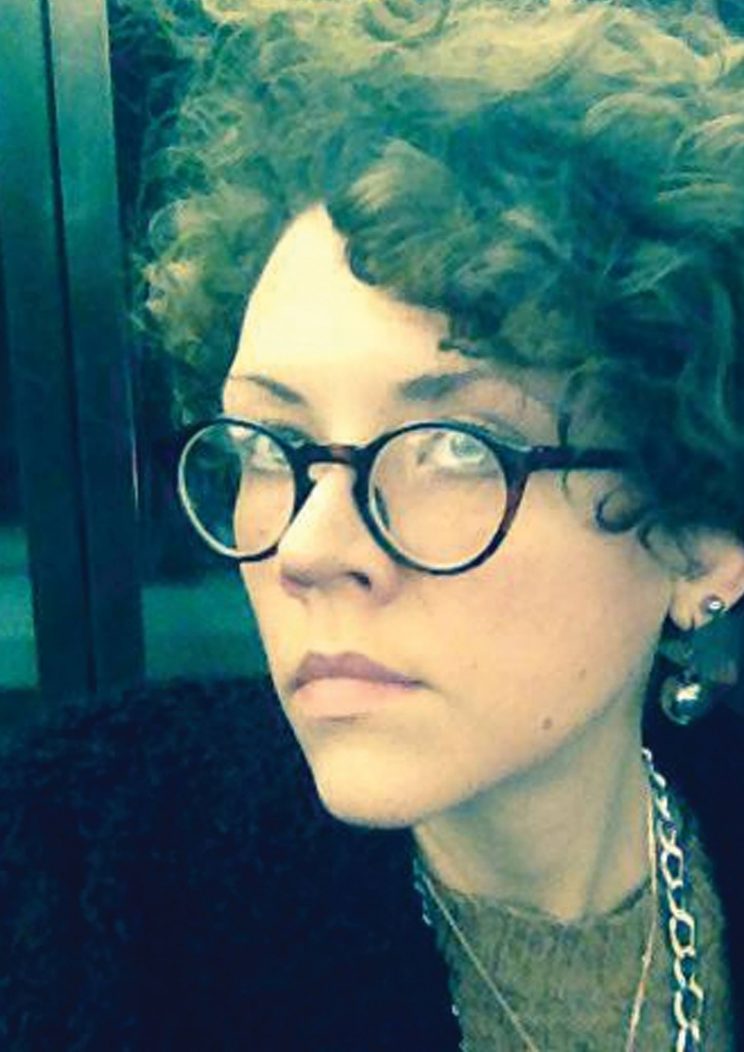
Curator Biographies
Dasha Birukova
Dasha Birukova (b. 1985, Russia) is a curator and writer based in Lisbon and Moscow. She graduated from the Russian State University for the Humanities, Moscow, Russia, art history department and at the Russian State University of Cinematography (VGIK), Moscow, Russia, cinema history department. Her specialisms are experimental film, video and media art,
Birukova curated the “New Media” programme at the National Centre for Contemporary Arts (Moscow) and co-curated the Festival of Media Art “VideoFocus” organised by NCCA (2014 and 2015).
She was a co-curator of the exhibition “Error Message” that was part of the 4th Moscow International Biennale of Young Art, 2014.
In 2016, Birukova joined the team of the high-profile project “Geometry of Now” curated by British artist Mark Fell, organised by the VAC Foundation in Moscow.
In 2017, she curated the exhibition “Pink Flamingos” at the art space BLEEK in Belgium.
During 2018 Birukova lectured at The Russian State University for the Humanities, Moscow, Russia, Department of the art history and at the British Higher School of Art and Design, Moscow.
Video programme for ‘Corpora Aliena: Dream and Shadows’ dedicated to Portuguese artists, which works fill with contemplative observations of time, space, feelings, lives, lost expectations or phantasmagoric dreams.
Participants: Pedro Barateiro, Rui Calçada Bastos, João Pedro Fonseca, Luisa Jacinto, Nikolai Nekh
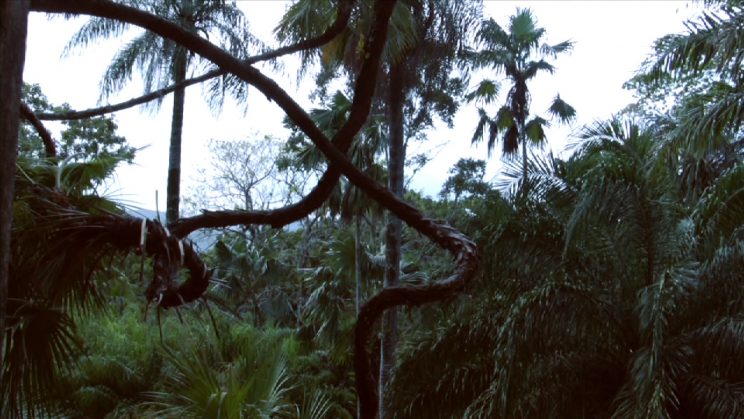
Pedro Barateiro. Curfew – Part I. 2013
HD video, color, sound, 10’19”
Text: Ricardo Nicolau.
Voice: Jorge Silva Melo.
Curfew – Part I was made from footage of Sítio Roberto Burle Marx, in Rio de Janeiro, Brazil. It’s a space created by the landscape architect to house his collection of plants. The soundtrack of the film is a recording of theatre director Jorge Silva Melo reading a text by Ricardo Nicolau, where a series of actions and gestures are constantly broken by the word silence. The word silence interrupts any possibility of a continuous communication in an exercise of reflecting on the colonial past while at same time taking into consideration the current geopolitics of economics of a post-capitalist existence. The title of the installation Curfew – Covering the Fire (2013) refers to the etymology of the word curfew, as a way of addressing the political and economic situation lived in Portugal during the financial crisis.
Bio: Pedro Barateiro (b. 1979, Almada, Lives and works in Lisbon. Working in sculpture, performance, writing and film, he has exhibited internationally at Kunsthalle Basel; Serralves Museum; Museu Coleção Berardo; Kunsthalle Lissabon; Lumiar Cité; 29th Bienal de São Paulo; 16th Sydney Biennale; 5th Berlin Biennale; Palais de Tokyo; nGbK, Berlin; and M HKA, Antwerp; amongst others. Barateiro programs for Spirit Shop, an artist run space initiated in 2018. He was involved in Parkour, a space for exhibitions, screenings and performances from 2012 to 2014. With Ricardo Valentim, he has co-edited the books ACTIVITY (JRP-Ringier, 2011) and Temporary Collaborations (2008). A monograph on his work has been published by Kunsthalle Lissabon and Sternberg Press.
http://pedrobarateiro.tumblr.com
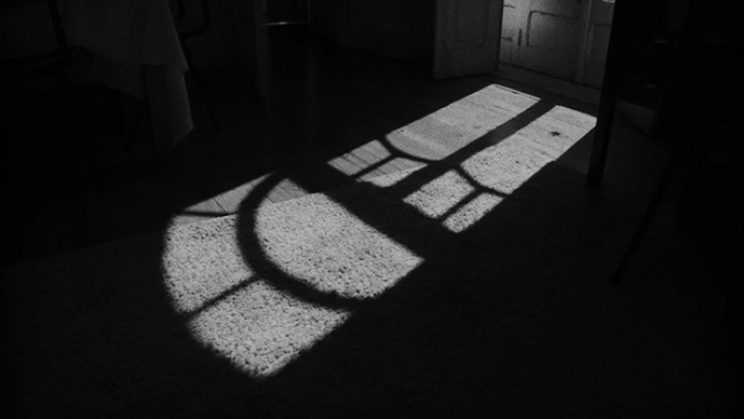
Rui Calçada Bastos. Spectateur eternel. 2016
Video, sound, 5’50’’
“The latest work of Rui Calçada Bastos, the film Le spectateur éternel (2016), is almost like a summing up of his work until now. It includes travelling and the acknowledgement of home at the same time. After years of extensive travel or constant displacement, he has returned to his hometown of Lisbon. While having arrived, he cannot escape the very impulse, which has been guiding his works since the beginning, making a virtue out of homelessness. Having always been on the move, he finally decides to stay at home and ventures on a journey in the confines of his room. We never see the wandering inhabitant, but the lens of the camera shows us that his eyes take delight in the sensations of the room, the armchair, the play of reflections of the moving sun on the walls and only occasionally venturing to the window, contemplating the fleeting shadows cast by passing airplanes over the facades of the neighbouring houses. A kind of travel that he has left behind.”
Bio: Rui Calçada Bastos was born in Lisbon in 1971.
He studied Painting at the Porto School of Fine Arts and the Lisbon School of Fine Arts, and Visual Arts at the Centre for Art and Visual Communication – Ar.Co, in Lisbon.
After a stay in Paris, at Cité international des Arts, he moved to Berlin in 2002 for a residency at Kunstlerhaus Bethanien. In 2004, Calçada Bastos was awarded the Arbeitstipendium der Senatsverweltung fur Wissenschaft, Forschung und Kultur in Berlin.
In 2005, together with artists Sergio Belinchon, Santiago Ydanez, Paul Ekaitz and Antonio Mesones, he co-founded the artist-run space Invaliden1 in Berlin. Until 2015, Invaliden1 presented and exhibited the work of almost a hundred contemporary artists from around the world.
Working with and in the cities that he traveled to or lived in (Macau, Shanghai, Paris, Lisbon, Berlin, Los Angeles, Rio de Janeiro) Calçada Bastos’ focuses on urban landscapes, objects, shapes and situations that would perhaps be overlooked at first glance. Working with photography, video, sculpture and drawing, he explores his themes poetically, confronting the viewer with a self-referential view. In a real and metaphorical sense, the reflections, duplications and confrontations constitute variations on a leitmotiv that runs through Rui Calçada Bastos’s videos, photographs and installations dealing with self and other, inner and outer, here and there. The artist continually changes his position in a perpetual attempt to reach towards self-assurance or anchorage, which never seem to take place.
https://www.ruicalcadabastos.com
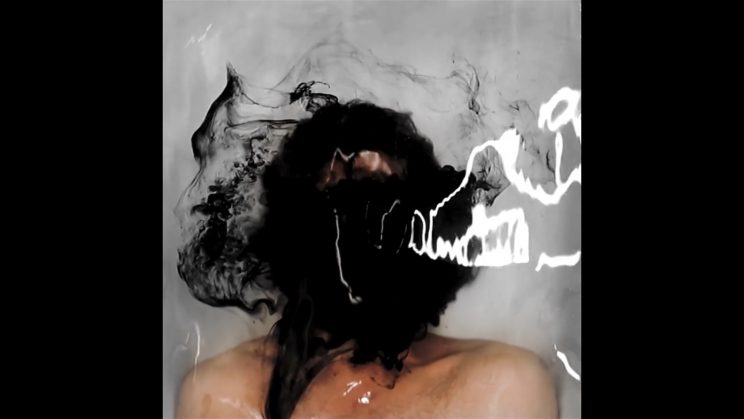
João Pedro Fonseca. Potesne me audire (“Can you hear me?”). 2016
Video, color, sound, 3’10’’
The little knowledge about Antinous’s death haunts his story to this day. Created several interpretations over the years, the reasons and myths have become innumerable, however, they all can’t escape a truth that unites them: Antinous died in the river (Nile). This piece intends to perpetuate Antinous in the waters that make up the most extensive vein in the world, a vein that carries its last breath. What emerges here is not so much an elucidation for its fateful end, but an issue that floats in its afterlife: we will still be able to hear the last breaths of Antinous and be the waters of a river the strongest window of memory?
Bio: João Pedro Fonseca, 1990, Portugal, works in several artistic fields. Studied painting at the Faculty of Fine Arts of the University of Lisbon but he concentrates his mainly work in the area of performance, video art and installation, already made exhibitions in galleries of Montpellie, Lisbon, São Paulo, Mexico City and Mallorca, and highlighting in several festivals as FUSO – VideoArt Festival, LOOPS. LISBOA, Jovens Criadores, Mundos Alternativos, Videoformes Festival, ARTNIT CAMPOS – Contemporary Art Festival and FICMA – Festival Internacional de Cine con Medios Alternativos. He is quite connected to the theater, working with video and scenography, made the opera “L’Isola Disabitata” (CCB, Lisbon, 2016), the plays “The Great Wave of Cold (from Orlando by Virginia Woolf)” (CCB, Lisbon, 2017), “Death of a Salesman” (Almada, Benite, 2018) “Sócrates tem de Morrer” (2018), “Testament in three acts” (CAL, Lisbon, 2018) and the contemporary dance play “Fraternidade” (Aveiro, 2018). Is director of ZONA – Artistic Residencies and the video art showcase LOOPCAVE in Desterro, Lisbon. He is founder of the electronic music label “No, She Does” and “ZABRA records”. Recently, created his first performance on stage “Anatomy of Extinction” at Appleton, Lisbon.
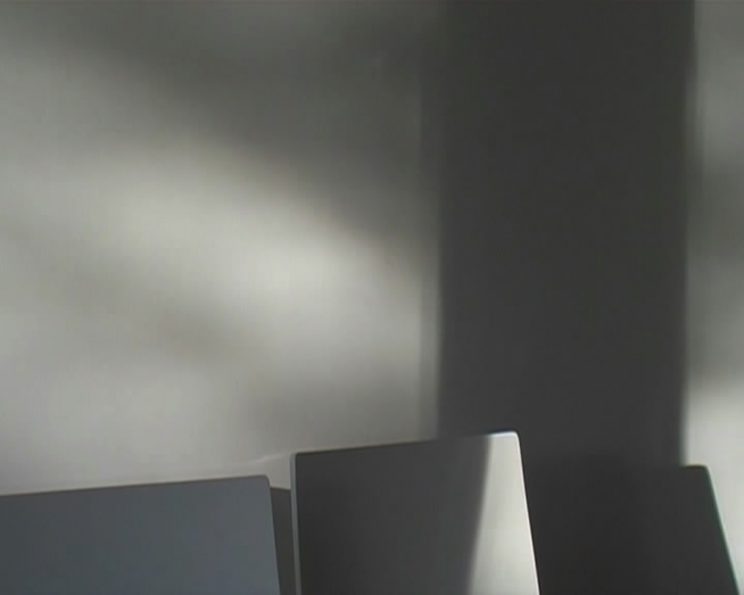
Luisa Jacinto. Things change quickly. 2010
Video, colour, sound, 11’30”
Things change quickly was shot in an apartment in North London. The concept is what the words hold as a title. I mean an awe, a terror, or joy, because there is a general movement in things, there is a slow and vertiginous break of being. It is an invitation to the present. To a time that does not obey or discuss. Streams, precious and indifferent. A gift. As Constable said, “I have never seen a single ugly thing.”
Bio: Luísa Jacinto, 1984, lives and works in Lisbon. She frequented the International Study Programme of Maumaus in 2017 and finished her MA at the Central Saint Martins – Byam Shaw School of Art in 2009.
Luísa Jacinto has exhibited regularly since 2007. Of special note among her solo exhibitions are We can always escape in the car, Fundação Portuguesa das Comunicações, An instant of this, galería silvestre, Madrid, 2016; Roda que roda, à volta do quarto, curated by Fátima Lambert, Museu Soares dos Reis e Quase Galeria, Porto, 2015 A single day is enough, curated by João Miguel Fernandes Jorge, Museu Carlos Machado, Azores, 2012. Of special note among her collective exhibitions are: Wait, curated by Orlando Franco, Museu Coleção Berardo, 2019; Saudade – Unmemorable Place in Time, curated by Yuko Hasegawa, Fosun Foundation, Shanghai, and Saudade, China & Portugal Contemporary Art, Museu Coleção Berardo, Lisboa, 2018; Pontos Colaterais, Coleção de Arte Arquipélago, a selecction, curated by João Silvério, Arquipélago, S. Miguel, 2015, and 17 Ingredients – Measures of Autonomy, curated by Shama Khanna and Blanche Craig, Studio One, London, UK 2009.
Luísa Jacinto’s work is represented in several collections, such has Fundação Calouste Gulbenkian Collection, Colecção Teixeira de Freitas – Madeira Corporate Services, Colecção Arquipélago – Governo dos Açores, Colecção Figueiredo Ribeiro, Museu Carlos Machado, Fundação Portuguesa das Comunicações, among others.
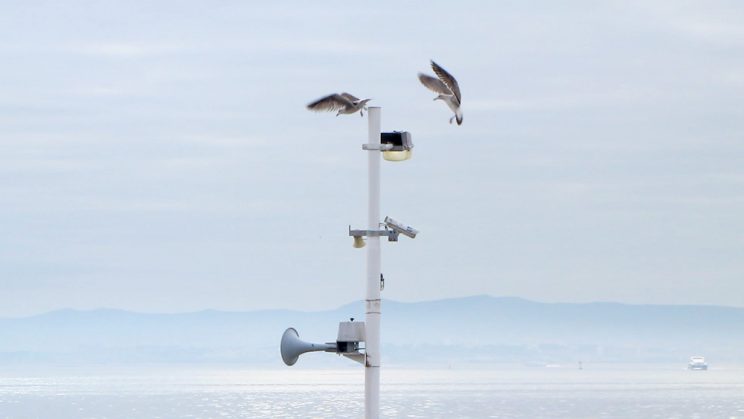
Nikolai Nekh. Tidal Restlessness. 2014
Video, color, sound, 8’27’’
A fragile composition with half-tones of everyday drama, built on the bustle of a harbour. The audio composition of arriving ships and ferries, the loading and unloading of people and goods, and the sound of seabirds results in a captivating industrial symphony in which subtle associations work to combine the images with the audio story of a place on the seashore.
Bio: Nikolai Nekh (1985, Slavhansk-na-Kubani) lives and works in Lisbon. His artistic practice consists in production and distribution of images. He is interested in trajectories of capitalism and its modes of representation.


